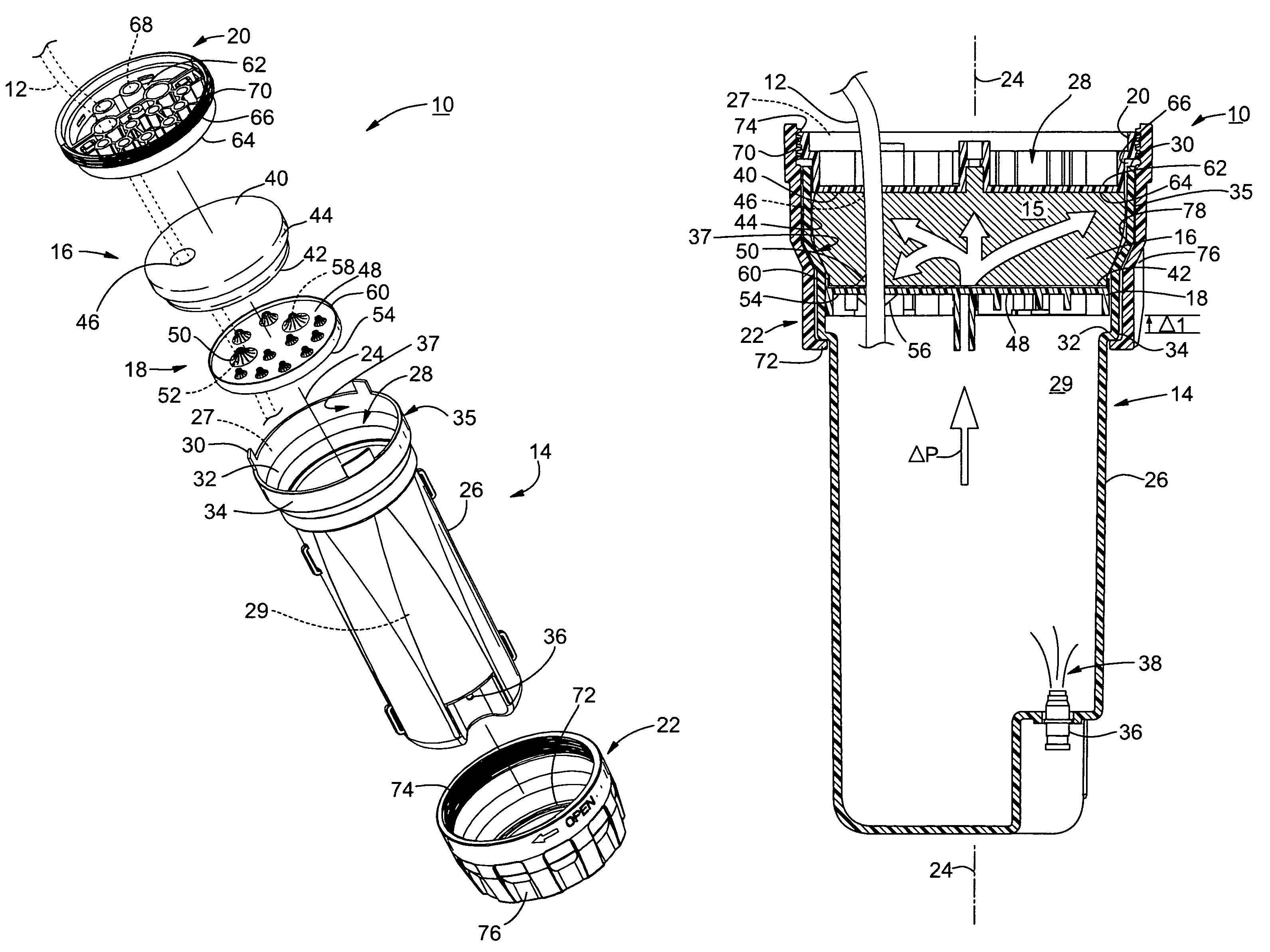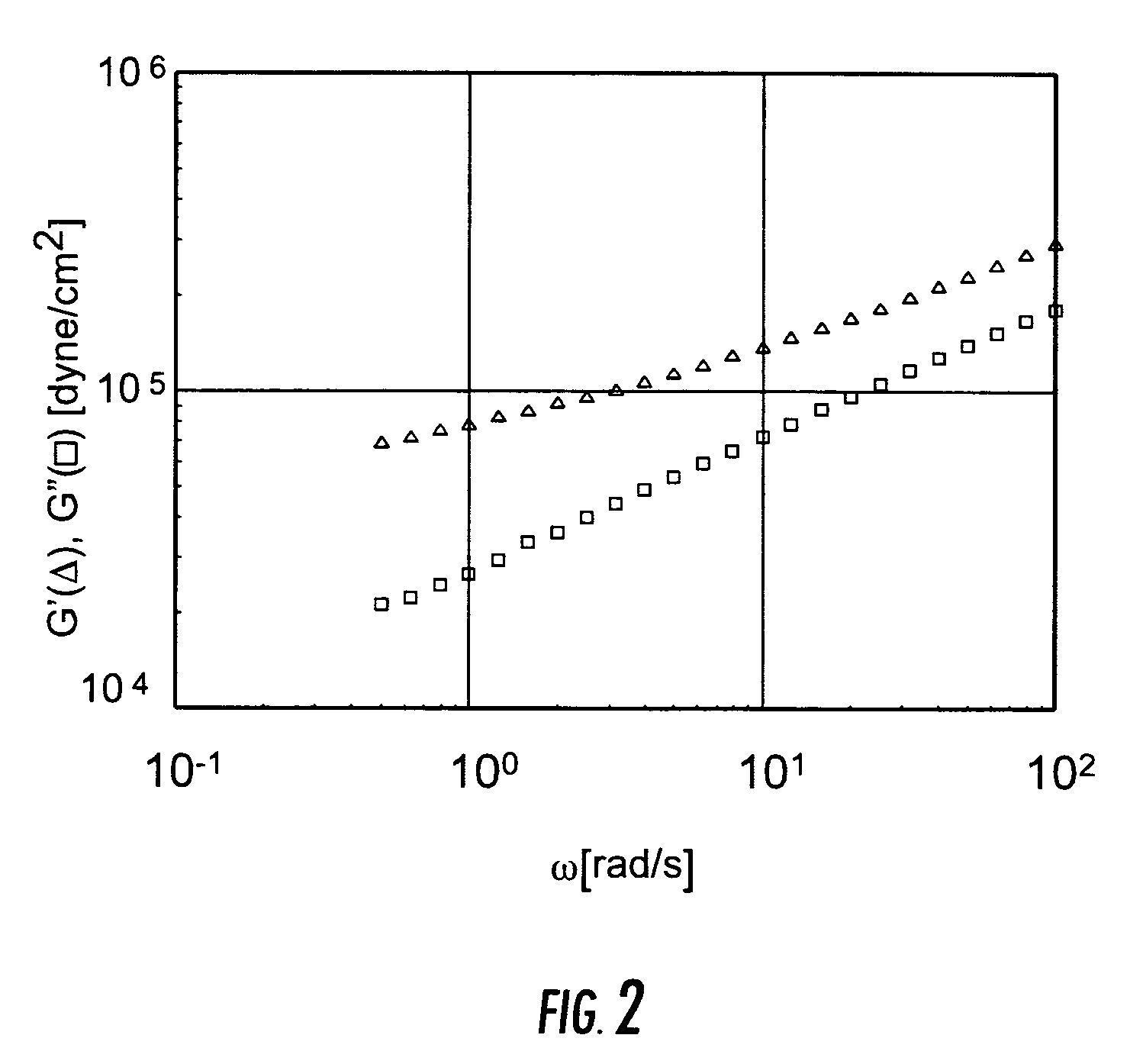Sealant gel for a telecommunication enclosure
a technology of sealing gel and enclosure, which is applied in the direction of coupling device connection, other chemical processes, instruments, etc., can solve the problems of gel melting and pooling, difficult to form a soft polyurethane gel that can withstand 120° c. heat-aging for a week, and most polyether-polyol-based sealant gels degrade, etc., to achieve excellent low-temperature performance, fast build up a hard backbone structure, and favorable mechanical properties
- Summary
- Abstract
- Description
- Claims
- Application Information
AI Technical Summary
Benefits of technology
Problems solved by technology
Method used
Image
Examples
example telecommunication
Enclosure
[0035]The present invention includes a telecommunication enclosure that utilizes the sealant gel of the present invention as described above. An example telecommunication enclosure in the form of a terminal seal or “terminal” as mentioned above is now described. The description of the terminal as presented below is based on U.S. patent application Ser. No. 11 / 881,518 assigned to Corning Cable Systems, LLC and entitled “Terminal with internal environmental seal,” which patent application is incorporated by reference herein in its entirety.
[0036]FIG. 4 is an exploded view of an environmentally sealed enclosure in the form of a fiber optic cable terminal 10. A fiber optic cable 12, which may be spliced, terminated or joined, is illustrated in phantom for clarity. An end portion of fiber optic cable 12 is sealed by fiber optic cable terminal 10. Further embodiments of the environmentally-sealed enclosure include one or more input members, such as fiber optic cables, copper cabl...
PUM
| Property | Measurement | Unit |
|---|---|---|
| temperature | aaaaa | aaaaa |
| temperature | aaaaa | aaaaa |
| temperatures | aaaaa | aaaaa |
Abstract
Description
Claims
Application Information
 Login to View More
Login to View More - R&D
- Intellectual Property
- Life Sciences
- Materials
- Tech Scout
- Unparalleled Data Quality
- Higher Quality Content
- 60% Fewer Hallucinations
Browse by: Latest US Patents, China's latest patents, Technical Efficacy Thesaurus, Application Domain, Technology Topic, Popular Technical Reports.
© 2025 PatSnap. All rights reserved.Legal|Privacy policy|Modern Slavery Act Transparency Statement|Sitemap|About US| Contact US: help@patsnap.com



